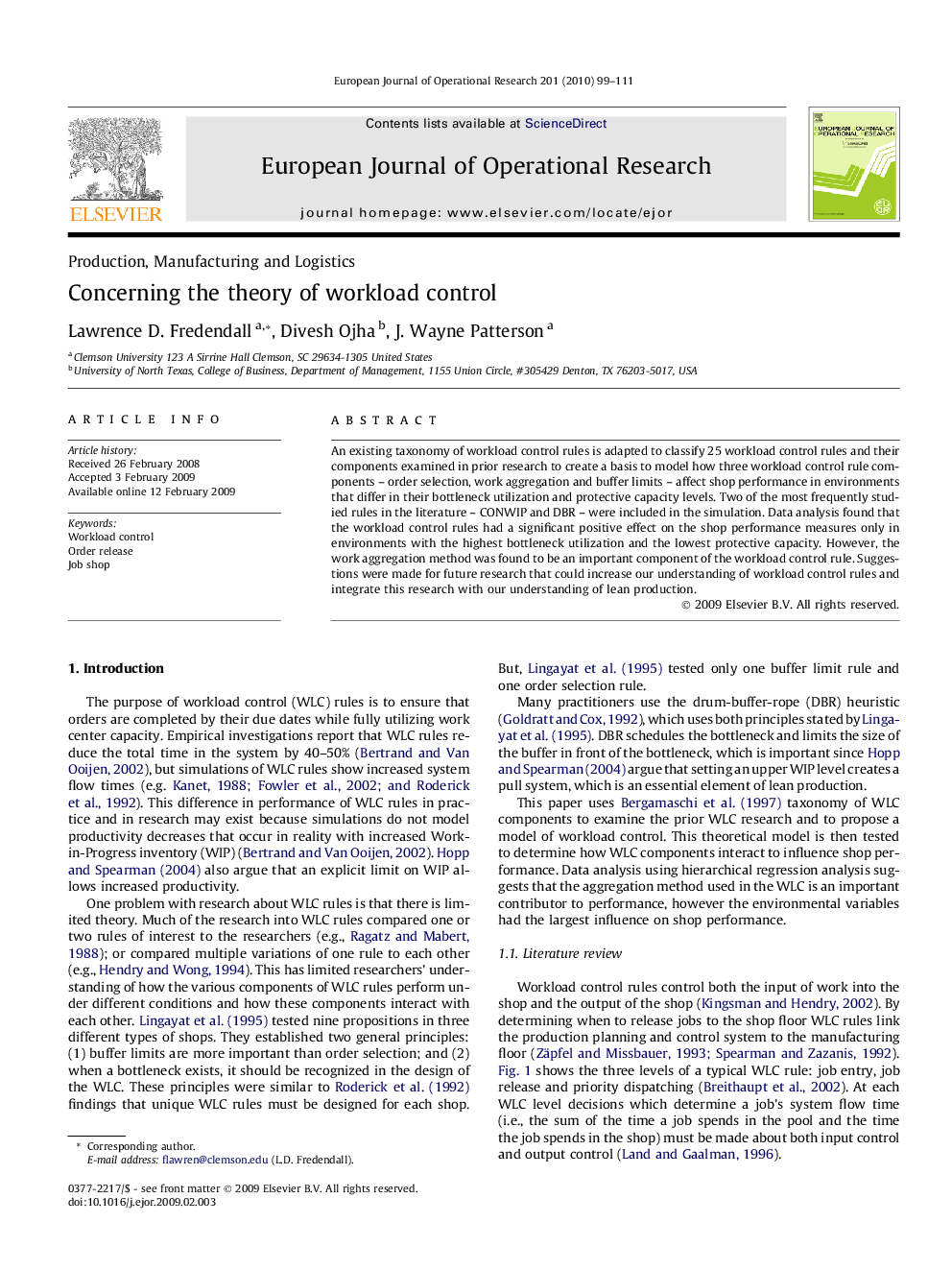| Article ID | Journal | Published Year | Pages | File Type |
|---|---|---|---|---|
| 478745 | European Journal of Operational Research | 2010 | 13 Pages |
An existing taxonomy of workload control rules is adapted to classify 25 workload control rules and their components examined in prior research to create a basis to model how three workload control rule components – order selection, work aggregation and buffer limits – affect shop performance in environments that differ in their bottleneck utilization and protective capacity levels. Two of the most frequently studied rules in the literature – CONWIP and DBR – were included in the simulation. Data analysis found that the workload control rules had a significant positive effect on the shop performance measures only in environments with the highest bottleneck utilization and the lowest protective capacity. However, the work aggregation method was found to be an important component of the workload control rule. Suggestions were made for future research that could increase our understanding of workload control rules and integrate this research with our understanding of lean production.
